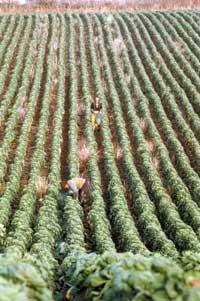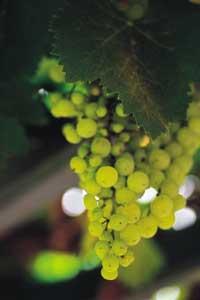Wine, renewed old drink
Although the oldest remains of wine were found in Egyptian amphorae, it was the Romans who expanded the culture of wine and developed the first techniques for its conservation. In particular, the retirees of the Roman army had the right to plant vines in the new conquered regions. Thus, wine spread throughout the Roman Empire, especially in regions of good climate.
Wine had another impulse in rebirth. European trade developed, among other things because it began to be exported to England, but unfortunately the conservation of wine was difficult. In Roman times sulfur was used, but later this custom of sulfur was lost and the wine was lit easily. XIX. Until the twentieth century it was a mediocre wine.

The second great impulse of the wine industry was due to the advances of agronomy, but when the diseases called "American" arrived, they again had problems. This plant leaf attacks the leaves and roots of the vine and destroys entire vineyards.
Two methods have been applied to combat the invasion. The first was to introduce the European vine into the trunk of the American vine resistant to the attacks of phylloxera (method that is still used today). The second is hybridization between two species. This makes a plant more resistant to other diseases, but its main drawback is that it produces a poor grape that only gives a bad wine. Therefore, in some countries hybridization is totally prohibited.
Contribution of science
Although production principles have not changed, scientific advances have allowed for improved wine conservation.
For example, before developing new techniques, in the years of poor maturity, it was customary to increase the degree of wine by adding sugar before fermentation. The smell that was authorized in some regions has never been well known and for many people is a fraud. Modern techniques are used to increase the concentration of sugar in juices.
On the other hand, the use of yeasts and bacteria selected by the agri-food industry contributes to control the fermentation avoiding organoleptic deviations such as the change of flavor and color. At present the yeast is being discovered that best suits each mahatsondo, to keep maintaining the particularities of each kind of wine.
As for preservatives, as already indicated, since Roman times sulfur has been used disproportionately. Who has not had a headache for drinking too much came the day before? Today the use of sulfur is well measured and it is rare to find a wine that contains too much sulfur, even the one that is damaged by its defect.
Many other substances can be added to wine, but most come from natural products. For example, egg albumin is only a white and is used to bind suspended particles. Casein also comes out of milk. Ascorbic acid, used to stabilize sweet wines, is only what we all know as vitamin C.
Enology, wine science
Enology is the science of the soul that measures the chemical composition, conservation, aging and bacteriological and chemical alterations thereof. It has been strengthened over the last two decades and, although science continues to develop today, it contributes to substantially improving the quality of mediocre wines. Although the production of wine seems simple, the production of “good wine” does not depend on everyone. First, good wine is not made without good grapes. To produce a good product it is essential that the vineyard is well preserved and healthy and that the grapes have a good degree of maturity.

But the work of the winemaker we all know is to taste and define wines. For this it is necessary to know what are the compounds of the wine and what is its contribution to the wine. Many years of experience are essential to be able to do it, but well, for everyone it may be convenient to have some ideas, if it is nothing more than to make interesting comments among friends. Wine is defined as sweet, acid, salty or acid, but for this it is necessary to identify the functions of alcohols, acids and other substances.
Alcohols that occupy between 8 and 17% of the volume of wine, before getting drunk the drink, help to maintain the wine, shape and give a mild flavor. Ethyl alcohol (ethanol) is the one that helps the survival of wine and takes the body when alcohol is inseparable from other elements. The alcohol that intakes the drink is glycerin.
For the wine to age, it must contain at first 4 g of acid, but it is also not convenient an excess of acid since the acidity also brings freshness to the wine. Therefore, wine with excess acid will be a green wine.
Finally, grape tannin brings body and therapeutic virtues to wine. Some red wines may contain up to 9 g of tannin per liter, but the normal dose is 3-4 g. Other aromatic substances give the wine a pleasant smell.
Published in 7K.
Buletina
Bidali zure helbide elektronikoa eta jaso asteroko buletina zure sarrera-ontzian











